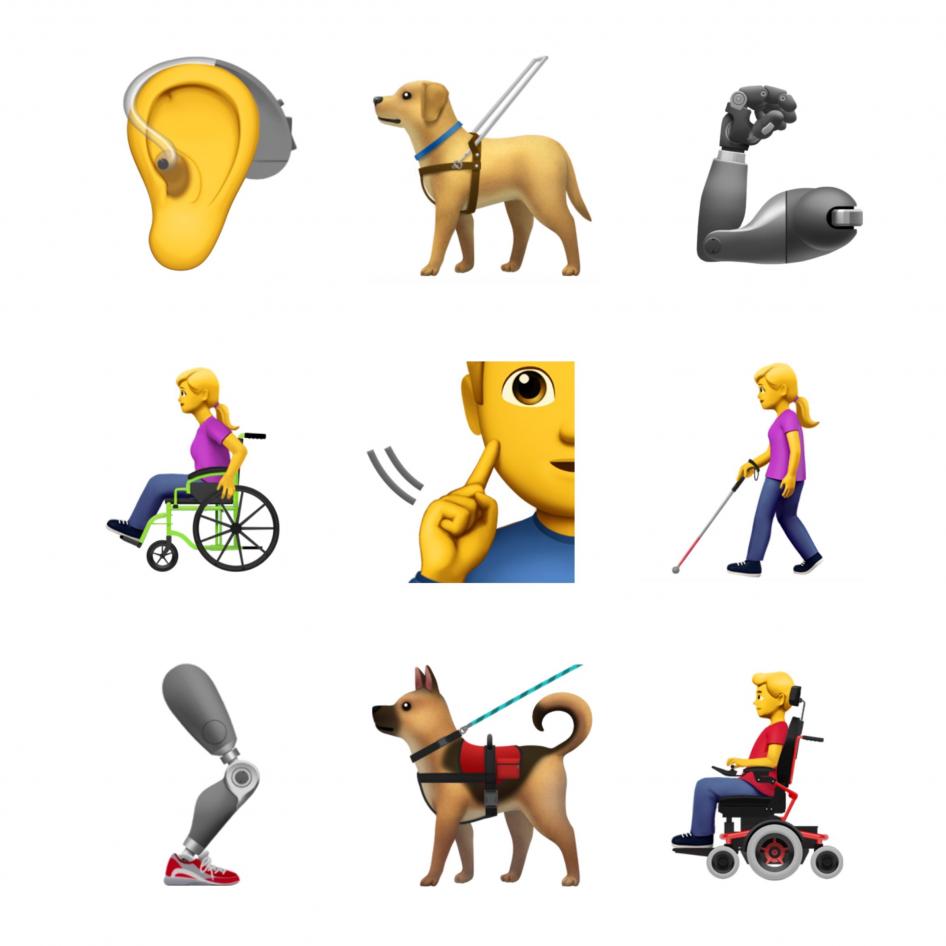As a person with a disability, I have never seen myself represented in the vast range of emojis – those small digital images – found on smartphones. There are magician, mermaid and merman, zombie, and vampire emojis. There are thousands of emojis but up until now, no one with a disability.
That is all about to change. Later this year, smartphones will have 59 new emojis representing people with disabilities. The new icons include men and women with a range of disabilities. There will be people with a white cane, with a service dog, with prosthetic limbs, using a wheelchair, and with a hearing aid. There is also an emoji of someone using sign language.
Emojis have become a crucial part of how many of us communicate. They can help share congratulations, personal news, good and bad moods, wishes, and plans. In fact, emoji is thought to be the fastest-growing language. It is only right that people with disabilities, as the world’s largest minority, are represented in, and able to access, culture and communication like this equally.
There is still a long way to go for full inclusion and accurate representation of people with disabilities, but it is a big step forward to be included in the emojis. I am looking forward to sending my first emoji with a white cane.




